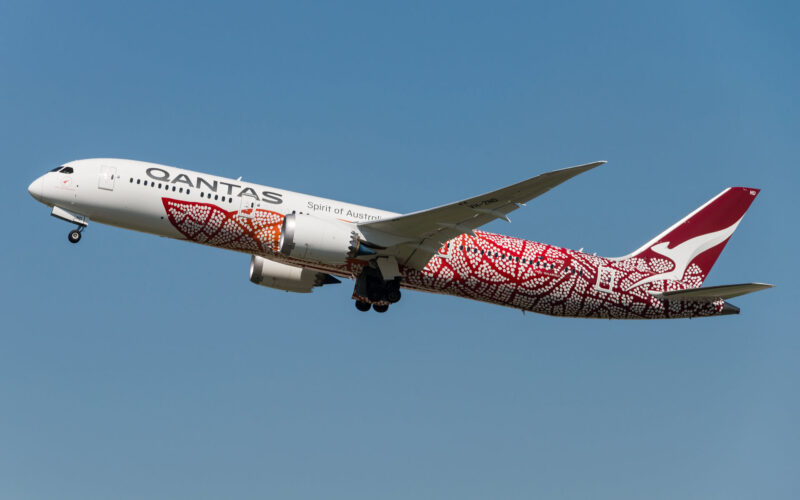One of the newest ways that some airlines look to earn revenue is by launching “flights to nowhere”, whereupon passengers take scenic flights that take-off and land in the same location.
The trend has started to spread in Asia, where All Nippon Airways (ANA) of Japan, China Airlines, EVA Air, and Tigerair Taiwan of Taiwan have operated such flights. Royal Brunei Airlines, the national flag carrier of Brunei, also joined in on the festivities, operating a flight to nowhere in August 2020.
While Singapore Airlines (SIA1) (SINGY) is still considering offering such an endeavor to its passengers, Qantas announced its own one-off scenic flight QF787. The journey will take passengers from Sydney Airport (SYD) on a flight with “low-level flybys of unique Australian destinations across Queensland, the Northern Territory and New South Wales including the Great Barrier Reef, Uluru, Kata Tjuta, Byron Bay, and iconic Sydney Harbour,” the announcement reads.
“Relax in the sky in Qantas pyjamas as your flight makes its way around the country with a few surprises along the way.”
The flights, much like everywhere else, were sold out immediately.
Environmental concerns
People are bored and the wish to travel is clearly there, as evident by the popularity of the so-called “flights to nowhere”. Yet before the trend truly takes off, it has to stop.
“Even though aviation is responsible for about 3% of global emissions, it is aircraft that are used as illustrations in articles about climate change. Everybody is very quick to remember the impact of aviation when climate change is discussed,” commented Anne Larilahti, the Vice President of Sustainability of Finnair, during AIR Convention Digital Week 2.0.
Larilahti is largely right. The flight shaming (flygksam) movement, seemingly, blamed aviation for global warming. Yet movements to reduce emissions from other sectors, for example, energy supply (29.3%) or agriculture (11.3% in 2014, according to European Environment Agency (EAA)), are nowhere near the popularity that flygskam has gathered. That is not to say that aviation should get a pass because of its relatively low emissions percentage – on the contrary, more pressure should be put on the industry to advance efforts not only to be carbon-neutral but to be completely emissions-free.
Offsetting schemes are also a part of the problem. At the end of the day, the emissions are, well, emitted. Qantas did indicate that the flight will be carbon offset, but again – it will not take away the fact that the flight will release greenhouse gasses into the atmosphere, which could have been largely avoided. I do get the point that airlines, much like every other business far and wide, have to try to bring in some cash, but is there not a more environmentally-friendly way to do so?
Especially considering the fact that despite the current crisis, governments are still very aware of the environmental concerns. Austria gave out a €450 million ($531.5 million) state aid package, consisting of direct aid and a state-guaranteed loan, to Austrian Airlines. In return, the airline committed that it would shift short-haul flights to rail if a three-hour direct connection to Vienna Airport (VIE) is available. Not only governments remain aware of the fact that aviation has to be kept in check regarding its emissions. Greenpeace indicated that it would sue the Dutch government over the fact that it gave out €3.4 billion ($4 billion) to KLM without any environmental strings attached, not to mention the numerous incidents where protestors stopped an airport’s operations.
We can do and we should strive to do better as an industry. Offer simulator joy-rides, offer aircraft or airport tours, promote on-land flight experiences with flight attendants serving meals to select passengers. There are numerous other options to gain cash without operating any flights that at the end of the day, lead passengers and the aviation industry as a whole to nowhere.

